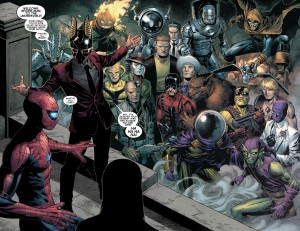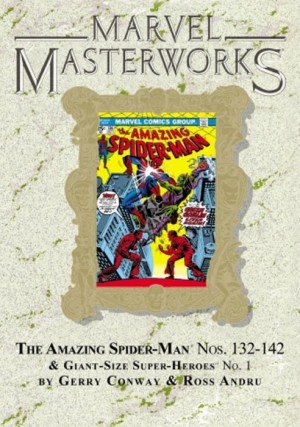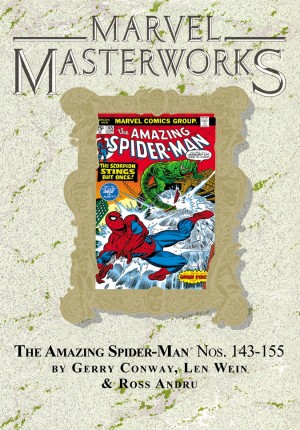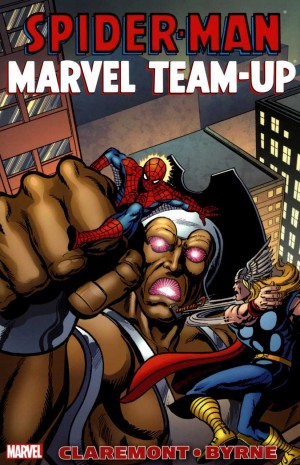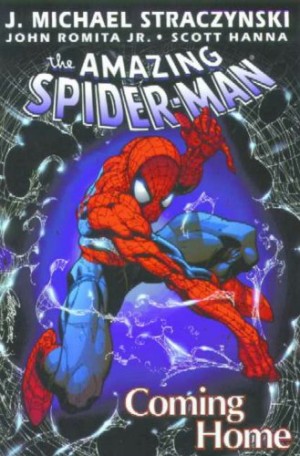Review by Frank Plowright
The Clone Conspiracy isn’t labelled as part of Spider-Man’s Worldwide series, but continues directly from the events of Before Dead No More.
Here’s the problem, though. ‘The Clone Conspiracy’ story seeped into several titles associated with Spider-Man, and the events in them occur concurrently with the main story. This worked for anyone buying the monthly comics, but leads to a major presentation issue here. In Marvel’s defence, it’s not possible to salt all the individual chapters in any kind of coherent order as events overlap, although it was certainly possible with some. Instead we have the entire core story done and dusted, then step back to spotlight the Prowler’s contribution from the start. It’s unsatisfactory. You’d be better off not buying this hardback and waiting until all the constituent parts are issued as paperbacks, then choosing which you want, as there’s also a variance in quality.
That said, dealing with clones is a statement of intent on Dan Slott’s part. Their involvement in 1990s Spider-Man comics was universally derided, whereas the original clone material from the 1970s was well handled for the most part. Slott refers to both, but copies neither, and in the central material produces a page-turner with as many twists as anything he’s previously written for Spider-Man. It succeeds not only due to relative brevity, but far greater application of the clone process, extending it way beyond Spider-Man and associates, and by throwing in complete left field items. Some fantastic art from Jim Cheung does no harm either. Those pages turn as if the Flash is reading them, and when it’s all done and dusted take some time to ponder the different emotional layers Slott introduces, which is where it doesn’t work as well. The problem is that so much emotional tangling is dealt with only in passing and that leaves a slightly hollow feeling.
Some of that is addressed in chapters originally presented in the ongoing Spider-Man series, where Slott spends some time with characters important to the main story, explaining their circumstances leading up to the present day. There’s one real heartbreaker, quite understated, and everything is competently drawn by Giuseppe Camuncoli, although he doesn’t appear to realise one character is supposed to be deformed. This section ends by confirming what will be suspected at the end of the core story. It can also be found separately collected as Amazing Spider-Man: Dead No More.
Likewise, there’s a separate collection of The Prowler, the weakest section in the book by a considerable distance, with the distinct odour of marking time on the part of writer Sean Ryan. It doesn’t thrill, underplays its big moment, and just fills pages. The art doesn’t compensate. Javier Saltares provides layouts for Jamal Campbell, and the resulting pages look like a succession of video game screen grabs.
For the Silk sequence Irene Strychalski works manga cartoon and Michael Allred influences into a very appealing art style and she’s strong on visual characterisation. This accentuates Robbie Thompson’s engaging presentation of a young woman with powers, yet uncertain about her capabilities. It’s a joyful skirt around the New U company in the presence of J. Jonah Jameson and Spider-Woman. Silk doesn’t have a large part to play in the main Clone Conspiracy event, but these chapters certainly do a good job of directing attention to her series.
This collection offers choice. It’s a chance to buy what is a pretty good story overall in a single hardback package. Alternatively wait for the individual trade paperbacks and you won’t have to bother with the Prowler.

